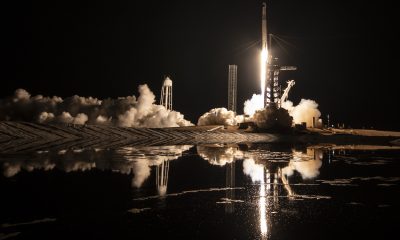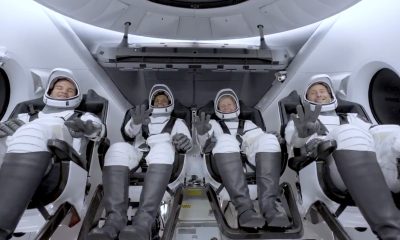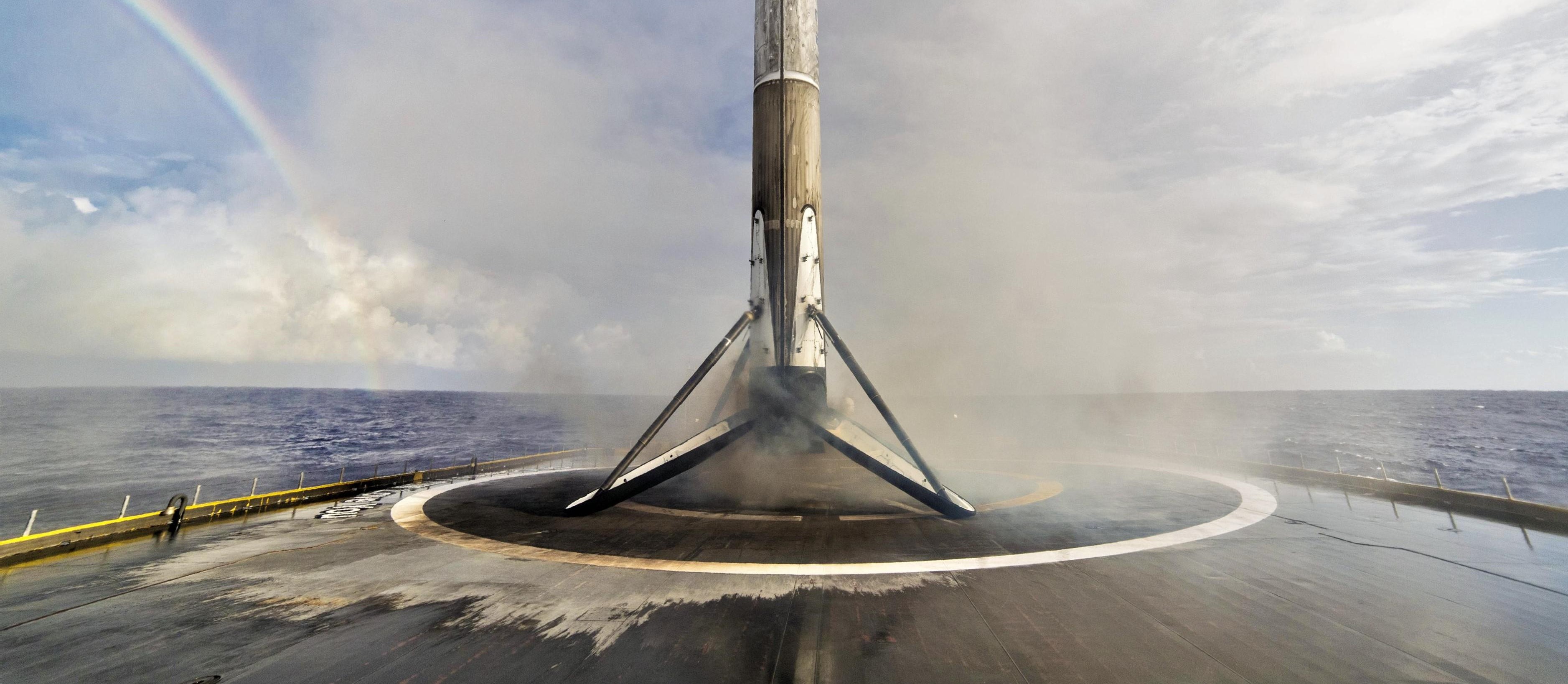

SpaceX
SpaceX’s first dedicated Starlink launch announced as mass production begins
SpaceX has announced a launch target of May 2019 for the first batch of operational Starlink satellites in a sign that the proposed internet satellite constellation has reached a major milestone, effectively transitioning from pure research and development to serious manufacturing.
R&D will continue as SpaceX Starlink engineers work to implement the true final design of the first several hundred or thousand spacecraft, but a significant amount of the team’s work will now be centered on producing as many Starlink satellites as possible, as quickly as possible. With anywhere from 4400 to nearly 12,000 satellites needed to complete the three major proposed phases of Starlink, SpaceX will have to build and launch a minimum of ~2200 satellites in the next five years, averaging 37 high-performance, low-cost spacecraft built and launched every month for the next 60 months.
A shift in the Stars
Despite the major challenges ahead of SpaceX, things seem to be going quite smoothly with the current mix of manufacturing and development. As previously reported on Teslarati, SpaceX CEO Elon Musk forced the Starlink group through a painful reorganization in the summer of 2018, challenging the remaining leaders and their team to launch the first batch of operational Starlink satellites no later than June 2019. As a consequence, a sort of compromise had to be reached where one additional group of quasi-prototype satellites would be launched before settling on a truly final design for serious mass-production.
According to SpaceX filings with the FCC, the first group of operational satellites – potentially anywhere from 75 to 1000 or more – will rely on just one band (“Ku”) for communications instead of the nominal two (“Ku” and “Ka”), a change that SpaceX says will significantly simplify the first spacecraft. By simplifying them, SpaceX believes it can expedite Starlink’s initial deployment without losing a great deal of performance or interfering with constellations from competitors like OneWeb.


Somewhere along the line, SpaceX would iteratively improve each subsequent ‘generation’ of Starlink satellites until they reached the nominal performance characteristics outlined in the company’s original constellation application. Knowing SpaceX, improvements would continue for as long as lessons continued to be learned from operating hundreds and eventually thousands of orbital spacecraft.
As one concrete example, recent SpaceX FCC documents stated that the first 75 Starlink spacecraft would feature a less-optimized reentry design, meaning that a select few components will not entirely burn up during reentry, creating debris that poses a
While the FCC has yet to grant SpaceX’s requested modifications, the other major goal is to reduce the operating orbit of the first phase of 1584 satellites to 550 km (340 mi), a change that SpaceX says will drastically reduce the potential lifespan of any orbital debris in the unlikely event of their creation. A lower altitude also places a major cushion between SpaceX’s first ~1500 satellites and the orbits of several other planned constellations, including OneWeb and Telesat.
Hello, Production Hell, my old friend
Meanwhile, SpaceX’s Starlink program has begun the often painful steps of transitioning from a venture primarily focused on research and development to one focused mainly on building production lines and supply chains and manufacturing hardware. SpaceX’s Starlink facilities are currently housed in three nearby buildings located in Redmond, Washington, likely offering approximately 150,000 square feet (14,000 m^2) for a mix of office, development, and production spaces. At least one of the three non-office buildings could potentially become dedicated to production while one building – approximately 40,000 ft^2 (~3500 m^2) – has already been completely transformed into a prototype of a Starlink satellite production line, supporting manufacturing for first several dozen quasi-prototype spacecraft. For reference,
Mass-producing spacecraft at the scale needed to build even half of those needed for the first phase of ~4400 Starlink satellites will be a feat unprecedented in the history of the space industry. Barring FCC exemptions (possible but unlikely), SpaceX needs to launch ~2200 Starlink satellites between now and April 2024. To complete the first phase, the final number of satellites rises to ~4400. Adding on a proposed constellation of very low Earth orbit (
Perhaps SpaceX will be able to garner invaluable insight from the lessons its sister company learned during Model 3’s torturous “production hell”, in which the car company had to grow its production volume by almost a magnitude as quickly as possible. Ironically, it may even be the case that SpaceX has the easier task relative to Tesla.
Check out Teslarati’s Marketplace! We offer Tesla accessories, including for the Tesla Cybertruck and Tesla Model 3.
News
SpaceX launches Ax-4 mission to the ISS with international crew
The SpaceX Falcon 9 launched Axiom’s Ax-4 mission to ISS. Ax-4 crew will conduct 60+ science experiments during a 14-day stay on the ISS.
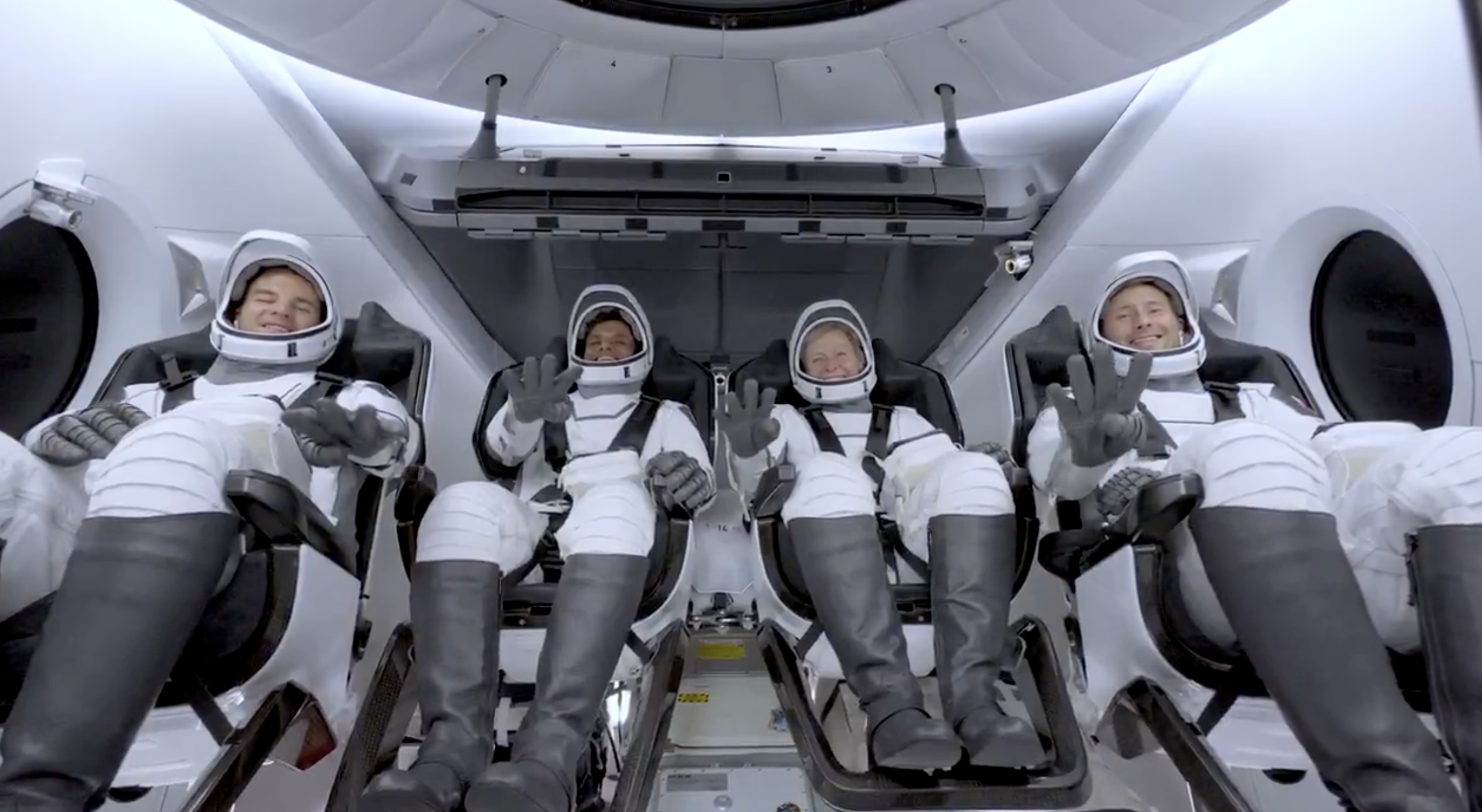
SpaceX launched the Falcon 9 rocket kickstarting Axiom Space’s Ax-4 mission to the International Space Station (ISS). Axiom’s Ax-4 mission is led by a historic international crew and lifted off from Kennedy Space Center’s Launch Complex 39A at 2:31 a.m. ET on June 25, 2025.
The Ax-4 crew is set to dock with the ISS around 7 a.m. ET on Thursday, June 26, 2025. Axiom Space, a Houston-based commercial space company, coordinated the mission with SpaceX for transportation and NASA for ISS access, with support from the European Space Agency and the astronauts’ governments.
The Ax-4 mission marks a milestone in global space collaboration. The Ax-4 crew, commanded by U.S. astronaut Peggy Whitson, includes Shubhanshu Shukla from India as the pilot, alongside mission specialists Sławosz Uznański-Wiśniewski from Poland and Tibor Kapu from Hungary.
“The trip marks the return to human spaceflight for those countries — their first government-sponsored flights in more than 40 years,” Axiom noted.
Shukla’s participation aligns with India’s Gaganyaan program planned for 2027. He is the first Indian astronaut to visit the ISS since Rakesh Sharma in 1984.
Axiom’s Ax-4 mission marks SpaceX’s 18th human spaceflight. The mission employs a Crew Dragon capsule atop a Falcon 9 rocket, designed with a launch escape system and “two-fault tolerant” for enhanced safety. The Axiom mission faced a few delays due to weather, a Falcon 9 leak, and an ISS Zvezda module leak investigation by NASA and Roscosmos before the recent successful launch.
As the crew prepares to execute its scientific objectives, SpaceX’s Ax-4 mission paves the way for a new era of inclusive space research, inspiring future generations and solidifying collaborative ties in the cosmos. During the Ax-4 crew’s 14-day stay in the ISS, the astronauts will conduct nearly 60 experiments.
“We’ll be conducting research that spans biology, material, and physical sciences as well as technology demonstrations,” said Whitson. “We’ll also be engaging with students around the world, sharing our experience and inspiring the next generation of explorers.”
SpaceX’s Ax-4 mission highlights Axiom’s role in advancing commercial spaceflight and fostering international partnerships. The mission strengthens global space exploration efforts by enabling historic spaceflight returns for India, Poland, and Hungary.
News
Starlink Cellular’s T-Mobile service to grow with third-party app data
From Oct 2025, T-Satellite will enable third-party apps in dead zones! WhatsApp, X, AccuWeather + more coming soon.
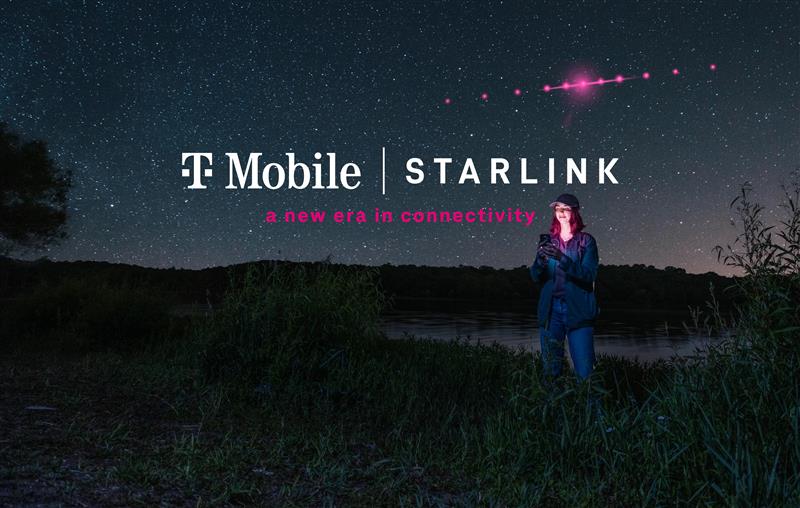
Starlink Cellular’s T-Mobile service will expand with third-party app data support starting in October, enhancing connectivity in cellular dead zones.
T-Mobile’s T-Satellite, supported by Starlink, launches officially on July 23. Following its launch, T-Mobile’s Starlink Cellular service will enable data access for third-party apps like WhatsApp, X, Google, Apple, AccuWeather, and AllTrails on October 1, 2025.
T-Mobile’s Starlink Cellular is currently in free beta. T-Satellite will add MMS support for Android phones on July 23, with iPhone support to follow. MMS support allows users to send images and audio clips alongside texts. By October, T-Mobile will extend emergency texting to all mobile users with compatible phones, beyond just T-Mobile customers, building on its existing 911 texting capability. The carrier also provides developer tools to help app makers integrate their software with T-Satellite’s data service, with plans to grow the supported app list.
T-Mobile announced these updates during an event celebrating an Ookla award naming it the best U.S. phone network, a remarkable turnaround from its last-place ranking a decade ago.
“We not only dream about going from worst to best, we actually do it. We’re a good two years ahead of Verizon and AT&T, and I believe that lead is going to grow,” said T-Mobile’s Chief Operating Officer Srini Gopalan.
T-Mobile unveiled two promotions for its Starlink Cellular services to attract new subscribers. A free DoorDash DashPass membership, valued at $10/month, will be included with popular plans like Experience Beyond and Experience More, offering reduced delivery and service fees. Meanwhile, the Easy Upgrade promotion targets Verizon customers by paying off their phone balances and providing flagship devices like the iPhone 16, Galaxy S25, or Pixel 9.
T-Mobile’s collaboration with SpaceX’s Starlink Cellular leverages orbiting satellites to deliver connectivity where traditional networks fail, particularly in remote areas. Supporting third-party apps underscores T-Mobile’s commitment to enhancing user experiences through innovative partnerships. As T-Satellite’s capabilities grow, including broader app integration and emergency access, T-Mobile is poised to strengthen its lead in the U.S. wireless market.
By combining Starlink’s satellite technology with strategic promotions, T-Mobile is redefining mobile connectivity. The upcoming third-party app data support and official T-Satellite launch mark a significant step toward seamless communication, positioning T-Mobile as a trailblazer in next-generation wireless services.
News
Starlink expansion into Vietnam targets the healthcare sector
Starlink aims to deliver reliable internet to Vietnam’s remote clinics, enabling telehealth and data sharing.

SpaceX’s Starlink expansion into Vietnam targets its healthcare sector. Through Starlink, SpaceX seeks to drive digital transformation in Vietnam.
On June 18, a SpaceX delegation met with Vietnam’s Ministry of Health (MoH) in Hanoi. SpaceX’s delegation was led by Andrew Matlock, Director of Enterprise Sales, and the discussions focused on enhancing connectivity for hospitals and clinics in Vietnam’s remote areas.
Deputy Minister of Health (MoH) Tran Van Thuan emphasized collaboration between SpaceX and Vietnam. Tran stated: “SpaceX should cooperate with the MoH to ensure all hospitals and clinics in remote areas are connected to the StarLink satellite system and share information, plans, and the issues discussed by members of the MoH. The ministry is also ready to provide information and send staff to work with the corporation.”
The MoH assigned its Department of Science, Technology, and Training to work with SpaceX. Starlink Vietnam will also receive support from Vietnam’s Department of International Cooperation. Starlink Vietnam’s agenda includes improving internet connectivity for remote healthcare facilities, developing digital infrastructure for health examinations and remote consultations, and enhancing operational systems.
Vietnam’s health sector is prioritizing IT and digital transformation, focusing on electronic health records, data centers, and remote medical services. However, challenges persist in deploying IT solutions in remote regions, prompting Vietnam to seek partnerships like SpaceX’s.
SpaceX’s Starlink has a proven track record in healthcare. In Rwanda, its services supported 40 health centers, earning praise for improving operations. Similarly, Starlink enabled remote consultations at the UAE’s Emirati field hospital in Gaza, streamlining communication for complex medical cases. These successes highlight Starlink’s potential to transform Vietnam’s healthcare landscape.
On May 20, SpaceX met with Vietnam’s Ministry of Industry and Trade, announcing a $1.5 billion investment to provide broadband internet, particularly in remote, border, and island areas. The first phase includes building 10-15 ground stations across the country. This infrastructure will support Starlink’s healthcare initiatives by ensuring reliable connectivity.
Starlink’s expansion in Vietnam aligns with the country’s push for digital transformation, as outlined by the MoH. By leveraging its satellite internet expertise, SpaceX aims to bridge connectivity gaps, enabling advanced healthcare services in underserved regions. This collaboration could redefine Vietnam’s healthcare infrastructure, positioning Starlink as a key player in the nation’s digital future.
-

 Elon Musk1 week ago
Elon Musk1 week agoTesla investors will be shocked by Jim Cramer’s latest assessment
-

 Elon Musk3 days ago
Elon Musk3 days agoElon Musk confirms Grok 4 launch on July 9 with livestream event
-

 Elon Musk10 hours ago
Elon Musk10 hours agoxAI launches Grok 4 with new $300/month SuperGrok Heavy subscription
-

 News6 days ago
News6 days agoTesla Model 3 ranks as the safest new car in Europe for 2025, per Euro NCAP tests
-
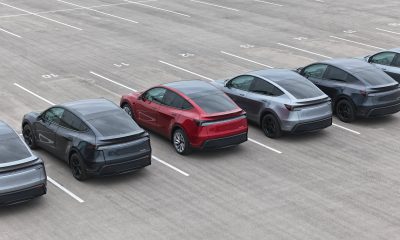
 Elon Musk2 weeks ago
Elon Musk2 weeks agoA Tesla just delivered itself to a customer autonomously, Elon Musk confirms
-
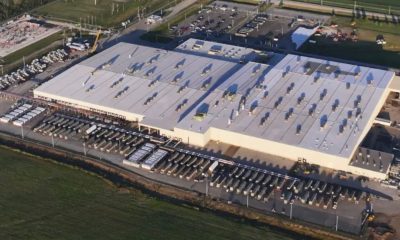
 Elon Musk1 week ago
Elon Musk1 week agoxAI’s Memphis data center receives air permit despite community criticism
-
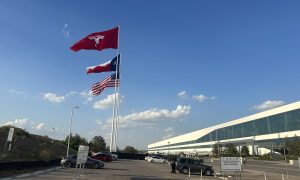
 Elon Musk2 weeks ago
Elon Musk2 weeks agoTesla’s Omead Afshar, known as Elon Musk’s right-hand man, leaves company: reports
-
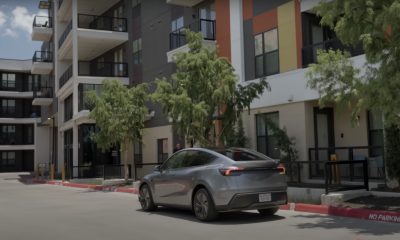
 News2 weeks ago
News2 weeks agoXiaomi CEO congratulates Tesla on first FSD delivery: “We have to continue learning!”


